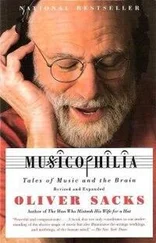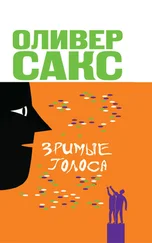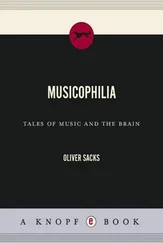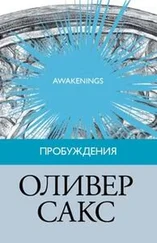Cathode rays, Uncle Abe assured me, could travel only two or three inches in ordinary air – but there was another sort of ray, far more penetrating, which Wilhelm Roentgen had discovered in 1895 while experimenting with just such a cathode-ray tube. Roentgen had covered the tube with a cylinder of black cardboard to prevent any leakage of cathode rays, and yet he was astounded to observe that a screen painted with a fluorescent substance lit up brilliantly with each discharge of the tube, even though it was halfway across the room.
Roentgen immediately decided to drop his other research projects in order to investigate this totally unexpected and almost incredible phenomenon, repeating the experiment over and over again to convince himself that the effect was authentic. (He told his wife that if he spoke of it without the most convincing evidence, people would say, ‘Roentgen has gone mad.’) For the next six weeks he investigated the properties of these extraordinarily penetrating new rays and found that, unlike visible light, they could not, apparently, be refracted or diffracted. He tested their ability to pass through all sorts of solids and found they could pass to some degree through most common materials and still activate a fluorescent screen. When Roentgen placed his own hand in front of the fluorescing screen, he was astonished to see a ghostly silhouette of its bones. A set of metal weights, similarly, became visible through their wooden box – wood and flesh were more transparent to the rays than metal or bone. The rays also affected photographic plates, he found, so that in his first paper he was able to publish photographs taken by the X-rays, as he called them – including a radiograph of his wife’s hand, her wedding ring encircling a skeletal finger.
On January 1, 1896, Roentgen published his findings and first radiographs in a small academic journal. Within days the major newspapers of the world picked up the story. The sensational impact of his discovery horrified the shy Roentgen, and after his initial paper and a verbal presentation the same month, he never discussed X-rays again, but returned to working quietly on the varied scientific interests which had engrossed him in the years before 1896. (Even when he was awarded the first Nobel Prize in physics in 1901 for his discovery of X-rays, he declined to give a Nobel speech.)
But the usefulness of this new technology was readily apparent, and X-ray facilities were rapidly set up around the world for medical use – to detect fractures, find foreign bodies, gallstones, etc. By the end of 1896, more than a thousand scientific articles on X-rays had appeared. The response to Roentgen’s rays, indeed, was not only medical and scientific, but seized the public imagination in various ways. One could buy, for a dollar or two, an X-ray photograph of a nine-week-old infant ‘showing with beautiful detail the bones of the skeleton, the stage of ossification, the location of the liver, stomach, heart, etc.’
X-rays, it was felt, might have the power to penetrate the most intimate, hidden, secret parts of people’s lives. Schizophrenics felt that their minds could be read or influenced by X-rays ; others felt that nothing was safe. ‘You can see other people’s bones with the naked eye’, thundered one editorial, ‘and also through eight inches of solid wood. On the revolting indecency of this there is no need to dwell.’ Lead-lined underclothes were put on sale to shield people’s private parts from the all-seeing rays. A ditty appeared in the journal Photography , ending,
I hear they’ll gaze
through cloak and gown – and even stays,
those naughty, naughty, Roentgen rays.
My uncle Yitzchak, after being in practice with my father during the months of the great flu epidemic, had been drawn into the practice of radiology soon after the First World War. He had gone on, my father told me, to gain uncanny powers of diagnosis by X-ray, able almost unconsciously to pick up the smallest hints of any pathological process.
In his consulting rooms, which I visited a few times, Uncle Yitzchak showed me something of his apparatus and its uses. The X-ray tube in his machine was no longer visible, as it had been in the early machines, but was housed in a beaked and humped black metal box – it looked rather dangerous and predatory, like the head of a giant bird. Uncle Yitzchak took me into the darkroom to watch him develop an X-ray he had just taken. Dimly, in the red light, translucent almost, beautiful, I saw the outlines of a thighbone, a femur, on the large film. Uncle pointed out to me a tiny hairline fracture, just visible as a grey line.
‘You’ve seen X-ray screening’, said Uncle Yitzchak, ‘in shoe shops, which show you the bones moving through the flesh. [57]We can also use special contrast media to show us some of the other tissues in the body – it’s marvelous!’
Uncle Yitzchak asked if I would like to watch this. ‘You remember Mr. Spiegelman, the mechanic? Your father suspects that he has a stomach ulcer, and sent him to me to find out. He’s going to have a barium ‘meal.’
‘We use barium sulphate’, Uncle continued, stirring up the heavy white paste, ‘because barium ions are heavy and almost opaque to X-rays.’ This comment intrigued me and made me wonder why one could not use even heavier ions instead. One could have, perhaps, a lead, or mercury, or thallium ‘meal’ – all of these had exceptionally heavy ions, though, of course, the meals would be lethal. A gold or platinum meal would be fun, but far too expensive. ‘What about a tungsten meal?’ I suggested. ‘Tungsten atoms are heavier than barium, and tungsten is neither toxic nor expensive.’
We entered the examining room, and Uncle introduced me to Mr. Spiegelman – he remembered me from one of our Sunday morning rounds. ‘This is Dr. Sacks’s youngest, Oliver – he wants to be a scientist!’ Uncle positioned Mr. Spiegelman between the X-ray machine and a fluorescent screen and gave him the barium meal to eat. Mr. Spiegelman spooned the paste down, grimacing, and started to swallow it, as we watched on the screen. As the barium passed down the throat and into the esophagus, I could see this filling and writhing, slowly, as it pushed the bolus of barium into the stomach. I could see, more faintly, a ghostlike background, the lungs expanding and contracting with each breath. Most disconcerting of all, I could see a sort of bag, pulsing – that, Uncle said, pointing, was the heart.
I had sometimes wondered what it would be like to have other senses. My mother had told me that bats used ultrasound, that insects saw ultraviolet, that rattlesnakes could sense infrared. But now, watching Mr. Spiegelman’s innards exposed to the X-ray ‘eye’, I was glad that I did not have X-ray vision myself, and that I was confined, by nature, to a small part of the spectrum.
Like Uncle Dave, Uncle Yitzchak retained a strong interest in the theoretical foundations of his subject and its historical development, and he also had a little ‘museum’, in this case of old X-ray and cathode-ray tubes, going back to the fragile, three-pronged ones that had been used in the 1890 s. The early tubes, Yitzchak said, offered no protection against stray radiation, nor were the dangers of radiation fully realized in the early days. And yet, he added, X-rays had shown their dangers from the start: skin burns were seen within months of their introduction, and Lord Lister himself, the discoverer of antisepsis, issued a warning as early as 1896 – but it was a warning that no one heeded. [58]
It was also apparent from the start that X-rays carried a good deal of energy and would generate heat wherever they were absorbed. Yet, penetrating as they were, X-rays did not have too great a range in air. It was the opposite with wireless waves, radio waves, which, if properly projected, could leap across the Channel with the speed of light. These, too, carried energy. I wondered whether these strange, sometimes dangerous relatives of visible light had perhaps suggested to H.G. Wells the sinister heat ray used by the Martians in The War of the Worlds , published only two years after Roentgen’s discovery. The Martian heat ray, Wells wrote, was ‘the ghost of a beam of light’, ‘an invisible yet intensely heated finger’, ‘an invisible, inevitable sword of heat.’ Projected by a parabolic mirror, it would soften iron, melt glass, make lead run like water, make water explode incontinently into steam. And its passage across the countryside, Wells added, was ‘as swift as the passage of light.’
Читать дальше












